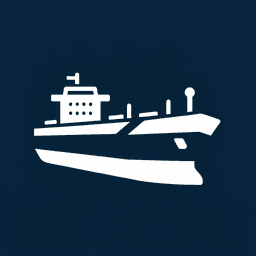
Tanker: Definition, Types, and Examples
February 27, 2025
Tanker
A tanker is a type of ship specifically designed to transport liquid cargo in bulk. These vessels are essential in the maritime industry for the transportation of various liquids, including crude oil, petroleum products, chemicals, and liquefied natural gas (LNG). Tankers are categorized based on the type of cargo they carry and their size.
Types of Tankers
- Oil Tankers: These are the most common type of tankers, used to transport crude oil and its derivatives. They are further divided into crude tankers and product tankers.
- Chemical Tankers: Designed to carry a wide range of chemicals, these tankers have specialized coatings and systems to handle different chemical properties safely.
- LNG Carriers: These tankers transport liquefied natural gas, requiring sophisticated containment systems to maintain the gas in its liquid state at extremely low temperatures.
Key Features
Tankers are equipped with advanced technology to ensure safe and efficient transport of liquid cargo. Key features include:
- Double Hulls: Most modern tankers are built with double hulls to reduce the risk of spills in case of a collision or grounding.
- Pumping and Piping Systems: These systems are crucial for loading and unloading cargo efficiently and safely.
- Inert Gas Systems: Used to prevent explosions by filling the empty space in cargo tanks with inert gas.
Size Classifications
Tankers are classified by size, which affects their route and port accessibility:
- Handysize: Small tankers that can access most ports.
- Panamax: Designed to fit through the Panama Canal.
- Suezmax: The largest size that can transit the Suez Canal.
- VLCC (Very Large Crude Carrier): Capable of carrying up to 2 million barrels of oil.
- ULCC (Ultra Large Crude Carrier): The largest tankers, used for long-haul routes.
Importance in Maritime Industry
Tankers play a critical role in the global economy by enabling the efficient transport of essential liquid commodities. They are a vital link in the supply chain, ensuring that energy resources and chemicals reach their destinations safely and on time.
Understanding Tankers in Maritime Context
Tankers are specialized ships designed for the transportation of liquid cargoes in bulk. These vessels play a crucial role in the global supply chain, particularly in the oil and gas industry. They are engineered to carry a variety of liquids, including crude oil, refined petroleum products, chemicals, and liquefied natural gas (LNG).
Types of Tankers
There are several types of tankers, each designed for specific cargo types:
- Oil Tankers: These are the most common type of tankers, used to transport crude oil and its derivatives. They are further classified into VLCC (Very Large Crude Carriers), ULCC (Ultra Large Crude Carriers), and smaller sizes like Aframax and Suezmax.
- Chemical Tankers: These vessels are equipped to handle a wide range of chemicals and often have multiple compartments to prevent cross-contamination.
- LNG Carriers: Designed to transport liquefied natural gas, these tankers have specialized containment systems to maintain the low temperatures required for LNG.
Key Features of Tankers
Tankers are equipped with advanced technology to ensure safe and efficient transport of liquid cargoes. Key features include:
- Double Hulls: Most modern tankers are built with double hulls to reduce the risk of spills in case of a collision or grounding.
- Pumping Systems: Efficient pumping systems are crucial for loading and unloading cargo quickly and safely.
- Navigation and Safety Equipment: Advanced navigation systems and safety equipment are essential for operating in various maritime environments.
Environmental and Safety Considerations
The operation of tankers is subject to stringent international regulations to minimize environmental impact and ensure safety. Organizations like the International Maritime Organization (IMO) set standards for tanker design, construction, and operation.
Frequently Asked Questions
Here are some common questions about tankers in the maritime industry:
- What are the three types of tankers? The three main types of tankers are oil tankers, chemical tankers, and LNG carriers, each designed for specific types of liquid cargo.
- What is clingage in a ship? Clingage refers to the residue that adheres to the inside surface of a container, such as a ship's tank, after it has been emptied.
- What is a synonym for the word tanker? Synonyms for tanker include oil tanker, oiler, and tank ship.
- What is an atanker? An atanker is a cargo ship fitted with tanks for carrying liquid in bulk, often used interchangeably with the term tanker.




